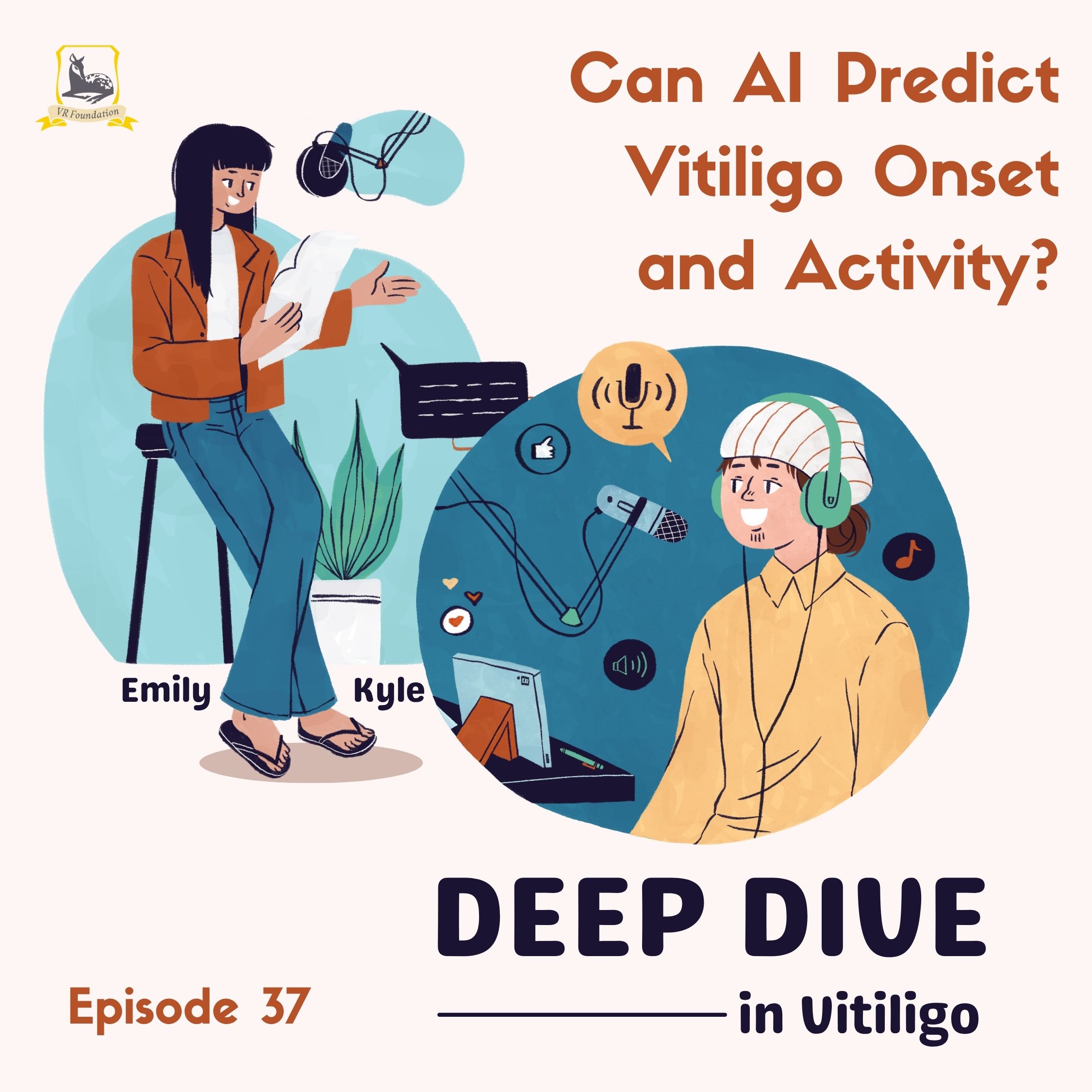Our work is entirely funded by private donations – we receive no money from government. Your money will help us continue funding research into vitiligo and supporting people affected by the condition.
Podcast
Can AI Predict Vitiligo Onset, Subtype and Activity? (Ep. 37)
AI is changing the game in vitiligo care — from spotting early signs to predicting disease progression.
In this episode, we dive into breakthrough research using machine learning to distinguish between segmental and nonsegmental vitiligo, forecast disease activity, and improve diagnosis using blood tests, imaging, and clinical data.
We cover:
- Why traditional diagnostic tools fall short
- How deep learning models analyze skin images for subtle signs
- The future of AI-powered precision dermatology
Can AI predict vitiligo before it appears? It’s closer than you think.

FAQOther Questions
- Which diseases most commonly accompany vitiligo?
Vitiligo is an autoimmune disease and is frequently associated with other autoimmune diseases, acccording to a 10-year study. The exact diseases that accompany vitiligo can vary...
- Red Wine and Vitiligo
Recent research has revealed intriguing findings about the potential protective effects of red wine against vitiligo, using a genetic approach to study health outcomes. Red Win...
- What is the best therapy for localized vitiligo?
Localized vitiligo, where the white patches are limited to one or a few areas of the body, can be managed with a few treatment approaches. The best therapy usually depends on th...
Though it is not always easy to treat vitiligo, there is much to be gained by clearly understanding the diagnosis, the future implications, treatment options and their outcomes.
Many people deal with vitiligo while remaining in the public eye, maintaining a positive outlook, and having a successful career.
Copyright (C) Bodolóczki JúliaBy taking a little time to fill in the anonymous questionnaire, you can help researchers better understand and fight vitiligo.